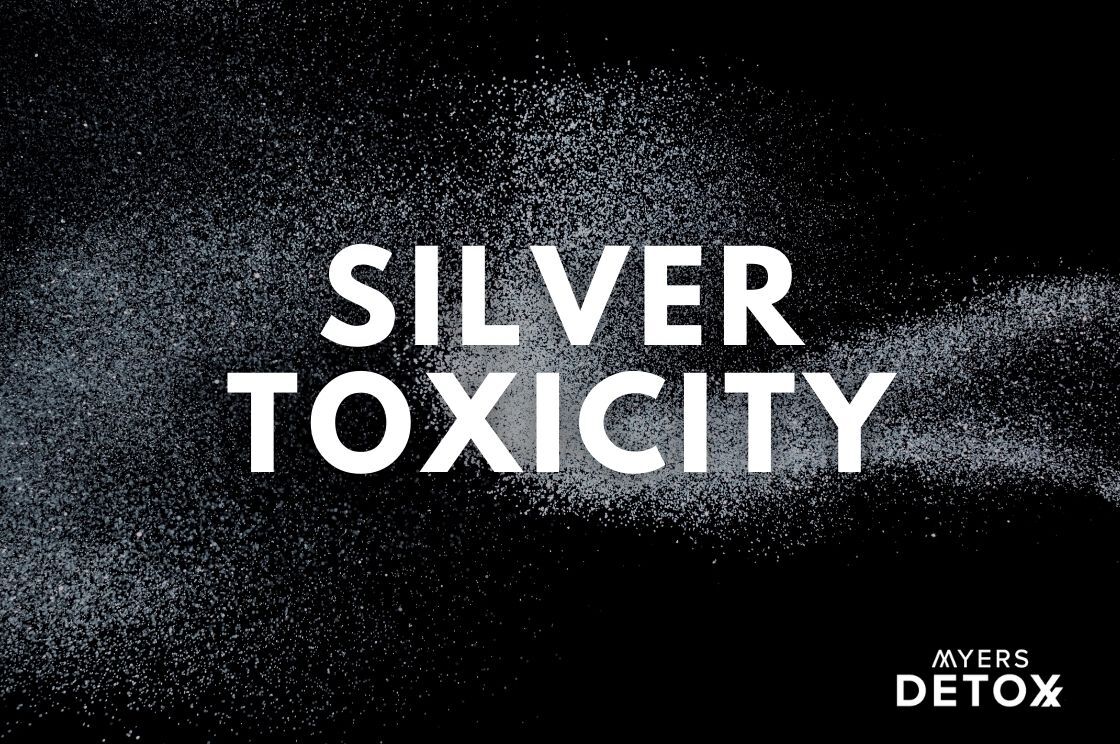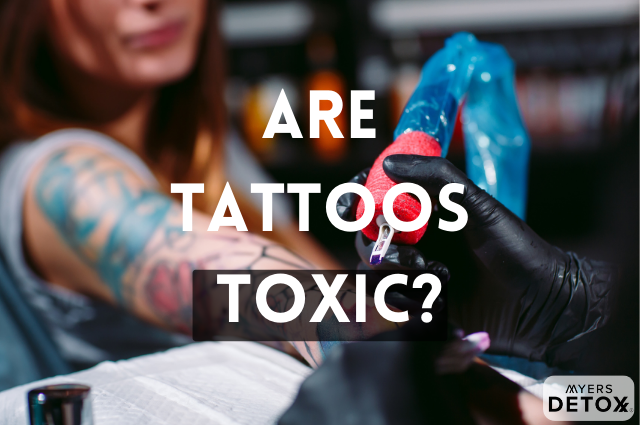Colloidal silver, in my opinion, is toxic to the body and should only be used externally or, occasionally, internally. It is a heavy metal, after all. In this article we will take a deep dive into silver toxicity and what you can do about it.
The concerns that come from silver are primarily due to taking silver internally as a natural antimicrobial. A big question that many people have is if silver is safe to take as a natural antibiotic. In my opinion, it’s a no. But still has a place in your natural medicine cabinet.
Silver possesses antimicrobial properties, but you may want to think twice before taking silver products internally, as research shows that this metal is associated with a range of health concerns, including neurological, dermatological, respiratory, and more.
In this article, we’re going to break down the story behind silver; we’ll cover:
- Where silver is found in our modern environment
- Symptoms of silver toxicity
- The potential long-term damage that silver can cause in your body
- How you can determine if you need a silver detox
- How to take silver safely
- What to use instead of colloidal silver
Sources Of Silver
Most of us think of colloidal silver when it comes to silver, but we can get it in the environment as well. Most of the environmental silver we come into contact with is the result of burning fossil fuels, cement manufacturing, and the processing of ores. These activities release silver into the air, which may be inhaled or deposited into the soil, where it can damage the soil ecosystem and inhibit the growth of plant and insect life[3].
Silver is used in a wide range of applications across several different industries. Below are some of the most common places you’ll find silver[1][2]:
- Mercury amalgam dental fillings
- Jewelry
- Silverware
- Food packaging
- Water purifiers
- Batteries
- Photography
- Bactericides
- Natural Antibiotic Cleaners
- Window coatings
- Mirrors
- Sanitation of swimming pools and hot tubs
- Cosmetics
- Electronic components
Medicinal Use of Silver
In addition to the above, supplement companies sell silver to kill infections, like ones that cause colds and flu. In fact, colloidal silver has become increasingly popular in the last couple of decades as people are trying to move away from antibiotics due to the rise in antibiotic resistance. Unfortunately, dosing yourself with silver may be just as damaging to your health as taking antibiotics[4].
Why? Because silver doesn’t leave your body easily. So every time you spray colloidal silver up your nose or in your mouth, you’re adding to your toxic heavy metal load. And since silver accumulates over time, if you’ve been using silver products for a while, you could be setting the stage for toxicity.
Silver is also added to anti-smoking lozenges, which is troublesome as most smokers trying to quit rely heavily on these alternatives.
If you’ve been using colloidal silver as your infection go-to, I have an excellent alternative that I recommend to my clients, it’s called Solaris. Solaris is effective at fighting infections of all kinds, without the unwanted side effect of building up in your body. It’s my go-to for any cold or infection and even skin fungal infections.
Symptoms of Silver Exposure
For the most part, the people at the highest risk for silver toxicity are those taking silver medicinally on a regular basis and those working directly with silver, like in jewelry making.
One of the cardinal signs of silver toxicity is generalized argyria, a condition where your skin turns blue, often permanently. And while the skin is usually the most obvious location of discoloration, silver can also cause discoloration of your hair, eyes, and internal organs[6].
Other symptoms associated with excess silver exposure include[2][17]:
- Decreased blood pressure
- Stomach irritation
- Nausea
- Diarrhea
- Vomiting
- Decreased breathing rate
- Discolored fingernails
- Inflammation and swelling of the skin
- Damage to the reproductive system
- Inhibition of normal growth and development
- Damage to intestinal glands
- Enlargement of the heart
- Alternation of neurotransmitters
- Interference with immunological activities
Possible Related Health Conditions
Studies show that long-term exposure to silver can result in a range of serious conditions due to this metal’s toxic potential. Respiratory disease, neurological effects, damage to the liver and kidneys, gut dysbiosis, and depletion of vital antioxidants are all concerns associated with silver accumulation in your body.
Let’s take a look at each in more detail:
Respiratory Disease
When you inhale silver, the particles can have a corrosive and irritating effect on lung tissue, causing immediate shortness of breath. Research shows that over time, working with silver dust or fumes can result in bronchitis, emphysema, and a reduction in pulmonary volume (the amount of air you’re able to take in)[2].
In vitro research also shows that silver may also have a genotoxic effect (DNA damage) on bronchial cells due to oxidative stress[7].
Neurological effects
While the precise mechanism for the neurological effects of silver is still not fully understood, we do know that this heavy metal is toxic to your brain cells.
Silver can cross the blood-brain barrier (BBB), which is part of the vasculature of the central nervous system meant to keep out foreign substances. This means that when inhaled or ingested, silver may pass through the BBB and accumulate in your brain. Here, silver may induce cell toxicity in your neurons and ultimately cause neurodegeneration[8][9].
In animal studies, silver has been shown to cause cell death in rat hippocampus, synaptic degeneration, neuronal shrinkage, and neuroinflammation. Furthermore, research suggests that the half-life of silver in the nervous system is longer than in other organs, which means it has ample time to cause damage before it degrades[10][11][12].
Liver and Kidney Toxicity
Your liver and kidneys often take a hit when it comes to toxic exposure as silver can deposit in these detox organs.
Animal research shows that once deposited in your kidneys, silver damages your glomeruli, a primary site for waste filtering from your blood. It also impairs the function of enzymes essential for kidney activity and disturbs the tubular architecture, which is vital for separating waste from nutrients[13].
In the liver, animal studies show that silver induces inflammation leading to tissue damage (fibrosis) and cell death, and increases the levels of alanine aminotransferase (ALT) and aspartate aminotransferase (AST) enzymes, which are markers of liver damage and disease[14][15].
Depletion of Glutathione
Studies show that silver has a particular affinity for the antioxidant compound glutathione. Once attached to glutathione, silver pulls this vital compound out of your body via the bile, thus depleting your resources[2].
Glutathione plays a number of roles in your body, with the primary job of protecting you against oxidative chemicals such as heavy metals and POPs (persistent organic pollutants). Low levels of glutathione are associated with several health conditions, including immune disease, cardiovascular disease, neurodegenerative disorders, liver disease, and many more.
Put simply, when glutathione becomes depleted, you have less ability to detox and you age faster[16].
Gut Dysbiosis
While silver can deposit throughout your body in various organs, it appears that this metal has a particular affinity for the human stomach and intestines[17].
Animal research shows that silver nanoparticles may impact the health of your gut by interfering with intestinal mucosal gene expression, and pushing your bacteria into dysbiosis. Specifically, research suggests that the presence of silver in the gut can increase the levels of gram-negative bacteria, while depleting healthy bacterial strains including populations of Firmicutes phyla and the Lactobacillus genus[18].
Aside from the obvious concerns that come with an imbalanced gut microbiome such as poor digestion and absorption, over time dysbiosis can lead to more serious threats such as leaky gut (intestinal permeability).
How To Detect Silver
I believe the most accurate test for silver would be Quicksilver Scientific’s Blood Metals Panel. This is a very advanced test blood test for metals and may be the only accurate way to test for silver.
My go-to for most heavy metal testing is a Hair Tissue Mineral Analysis (HTMA) with Trace Elements. However, this particular test that I do does not test for Silver. You can however, do an HTMA with Doctor’s Data and they do test for silver. *
How To Support Your Body’s Natural Detoxification Systems to Eliminate Silver
If you do find silver toxicity on your metals tests, there are a handful of helpful compounds and nutrients that can help you push this metal out of your body by supporting your natural detox mechanisms:
DMSA (dimercaptosuccinic acid) is a chelating compound that binds to heavy metals in your blood, and assists in pulling them out of your body via your urine[16]. *
DMPS (dimercaptopropane-sulfonic acid) is another effective chelating agent that’s commonly used in Germany for detoxing heavy metals, and is gaining popularity among natural health practitioners in the US. DMPS goes to work quickly, and within 24 hours about 80% of this compound is already excreted (mainly via the kidneys, with some excretion through bile)[19].
Selenium plays an important role in the production of glutathione in your liver. Glutathione is an all-star when it comes to metal detox, as this antioxidant neutralizes the impact of toxic chemicals while assisting with their removal – which also means that excess silver can diminish your glutathione stores[20][21].
Sulfur supports overall liver detoxification, and is another nutrient involved in glutathione synthesis. When your liver is overloaded (as most of ours are), it has a hard time carrying out its everyday functions. Add to that the burden of heavy metal toxicity and you’re in real trouble. Adding sulfur to your diet or supplement regimen can give your liver the assistance it needs to carry out its functions, like pushing out heavy metals naturally[22][23][24].
Takeaway
Most people don’t think of silver as a heavy metal, but it’s important to remember that, just like other toxic metals, silver can cause damage to your body and has no known biological role. In other words, the ideal amount of silver in your body is zero.
I think silver is perfectly fine to apply externally on a wound. And I also would personally take it in lieu of taking antibiotics if needed. I think it’s fine to take on occasion. You just need to be very careful with not abusing it, as you would any natural antibiotic.
If you’ve been using colloidal silver as your infection go-to, I have an excellent alternative that I recommend to my clients, it’s called Solaris. Solaris is effective at fighting infections, without the unwanted side effect of building up in your body. It’s made of a proprietary blend of ingredients that are the most potent supplement I’ve found to address any type of infection. I have used it for years and I cannot recommend it highly enough.
*These statements have not been reviewed by the FDA. The information herein is not intended to diagnose, treat, cure, or prevent any disease. Nor is it meant to replace or act as a substitute for speaking to a medical doctor and/or licensed health practitioner. Any products discussed are not intended to diagnose, treat, cure, or prevent any disease. They are not intended to replace any medication, medical test(s), or healing modality prescribed by your medical doctor. Please consult with your doctor before beginning a new supplement regimen.









